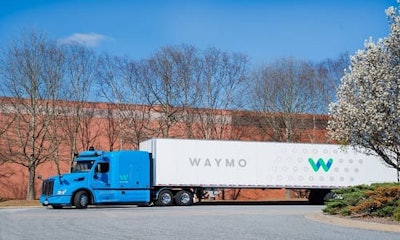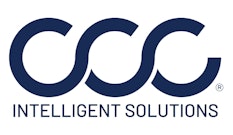
Waymo's self-driving truck .
Toronto, Ontario – July 13, 2018 – In this weeks AV Report: Daimler outlines AV plans, a potential fatal flaw in AI, RBC estimates potential AV revenues for GM and much, much more!
The parent company of Mercedes-Benz, Daimler, floated a new AV plan this past week. The company claims it will roll out a self-driving pilot project in 2019. The vehicles were described as “automated shuttles.” Though, at least some of the cars will be S-Class luxury sedans. The vehicles will carry human attendants, “safety drivers,” in the words of Daimler. The attendants are there to, “keep an eye on the system” according to a media report. Could be an all right job. Passengers will request rides via an app. The rides will be free. Though, the travel and location data of the kind of people who take an S-Class Mercedes will surely be worth something to the company. An interesting point in the plan” Daimler will work with Porsche to develop the sensors the AVs will use to perceive the world. So this is going to be an amazing bit of engineering. The cars will generate a “gargantuan” pile of data. A Bosch stereo camera generates 100 gigabytes of data every 0.62 miles. So the companies reckon they’ll need, “… the equivalent computing power of six, highly-advanced, desktop workstations in each car to handle it all… If the computer gets a bit hot when running at full speed, the companies are planning to integrate water cooling for the computer into an electric car’s battery coolant system.” Which is cool. https://bit.ly/2N2G1xq
The investment banking arm of the Royal Bank of Canada, RBC Capital Markets, says $GM’s Cruise Holdings could be worth $43 billion. Investment bankers are now talking about how best to analyze and value the new industry. One metric that the analysts seem to be hitting on is “earnings per mile.” According to the RBC analyst, if the GM subsidiary can develop a fleet of 800,000 self-driving vehicles, those vehicles could drive 58 billion miles by 2030. According to the RBC analyst, “For now, it appears GM’s plans are to run its own transportation network company (TNC). If they can get the technology right and execute on this plan, then when we run this scenario, we see them having a fleet of ~800,000 vehicles by 2030 driving ~58 billion miles that year. At $0.55/mile and 29% [margins], we see ~$17 billion [in earnings]… this values Cruise at $43 billion.” The story also claims GM is, “… pondering a Cruise spin-off or tracking stock for the company.” GM bought the AV company for a bit over half a billion. Then the company had 50 employees. It is getting ready to hire more than 1,000 people in the year ahead. According to RBC GM’s 80% stake in Cruise accounts for $7 of the current share price of the automaker. The analyst put a $53 price target on the stock. That’s 33% above where it is now. The analyst was quoted as saying, “Autonomous driving will rely on machine learning algorithms and deep neural networks (deep learning) to take all the sensor inputs (cameras, lidar, radar, maps, and other sensors) to drive, make decisions and understand location/perception… the more miles the AI takes in, the more it learns. Thus, miles = knowledge.” The report also noted that, “… disengagements, or instances where a human driver has to override the car’s computer system, have decreased drastically — a good sign for a future commercial roll out.” All in, “Judging how close GM is to a commercial launch is hard, as the company has remained purposefully vague… Executives have stated that GM’s fleet will be available in 2019 and continue to say that we are a matter of quarters away from launch, not years.”
On the other hand there are those who claim the current hype around AVs is about to deflate. The reason: AI software will encounter technical limits that will prevent true AVs from emerging. AI programs depend on deep learning, which uses, “… algorithms to extract structured information from massive data sets.” For a long time, researchers thought they could improve the ability for AI programs to be able to “generalize” and identify the same object correctly in the frames of video inputted from sensors. But, “… recent research has shown that conventional deep learning is even worse at generalizing than we thought. One study found that conventional deep learning systems have a hard time even generalizing across different frames of a video, labeling the same polar bear as a baboon, mongoose, or weasel depending on minor shifts in the background. With each classification based on hundreds of factors in aggregate, even small changes to pictures can completely change the system’s judgment, something other researchers have taken advantage of in adversarial data sets.” https://bit.ly/2lOSmdg
A former Apple engineer has been arrested on charges, “… of stealing self-driving car trade secrets with the intention of handing them to auto startup Xiaopeng Motors,” according to news reports. A former employee of Apple was caught, “… just before boarding a flight to China from San Jose airport on July 7. The hardware engineer had quit Apple in April to start working for Xiaopeng, but returned to download software to his wife’s laptop before heading to China…. Xiaopeng said it knew nothing about the matter before hearing the news.” As a company, Xiaopeng Motors has only been around since 2014. the company unveiled its first model, a sport utility vehicle, at the Consumer Electronics Show in Las Vegas in January. The Guangzhou-based company said it will cooperate in every way with the investigation, according to a media report. Apple is said to have 5,000 employees working on a self-driving car.
Someone posted dashcam footage of a Waymo AV truck on Youtube.com recently. This is what they look like (not the absence of a driver): https://bit.ly/2u7id4q




















